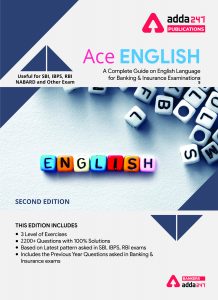Directions (1-10): Read the following passage carefully and answer the questions given below them. Certain words/phrases have been printed in bold to help you locate them while answering some of the questions.
The corporate totem pole
Corporate roles can also contribute to poor communication at work. Directors and middle managers in particular tend to get caught in the middle of those conflicting communication preferences. As a result, they are affected by miscommunication most frequently: 49% of directors say the consequences of poor communication occur frequently or very frequently among their colleagues. That is substantially more than the 28% of C-suite executives who say the same. “Middle managers have the worst of all worlds,” Mr. Markman says. “Communication is one of the most significant parts of their job because they’re dealing with the widest variety of people.” Probably because of their location in the hierarchy, directors tend to be prolific users of nearly every tool and mode of communication— much more so than other seniorities. Furthermore, a larger share of directors finds nearly every mode of communication more effective than their colleagues of different seniorities. They are the Swiss Army knife equivalent of corporate internal communication. Ms Cain believes there are perks to this. “The great value of being stuck in the middle is you can easily empathize with those above and below you because you’re simultaneously in both roles,” she says. “You have tremendous insight into what everyone around you is feeling, you can project yourself into their shoes and you know what the pressures and stressors are for your boss.” As individuals move up the corporate ladder, they need to not just have a broad understanding of different communication styles but also adapt their approach to their position in the organisation.
What to do about workplace miscommunication?
Work environments don’t have to be full of miscommunication land mines, and businesses can take practical steps to improve communication. Meetings are a good place to start. The survey shows that 78% of respondents think having clearer goals for every scheduled meeting would have a significant impact on improving workplace communication, including 39% who say the
improvement would be very significant. Moreover, six out of ten respondents say firm-wide training (62%) and having a wider range of communication tools to use (63%) would significantly improve work communication. By improving in areas such as these, as well as being aware of communication differences and the best applications of various tools, the workforce can both communicate more effectively and keep pace with the inevitabl
continuous change in when and how we connect at work.
Q1. What is meant by ‘conflicting communication preferences’ mentioned in the beginning of the stanza 1?
(a) communications done with the directors
(b) communications that are often misleading
(c) poor communications done at corporate level
(d) communications that have turned into an argument
(e) poor communications done unintentionally
Q2. Communication is one of the most significant parts of the job because…….
(a) employees have to state different ideas before their seniors in one of the most attractive way
(b) corporate workers hardly say any word to each other
(c) employees hardly deal with any of the seniors
(d) employees have to deal with the wide variety of the people
(e) Both (b)&(c)
Q3. Who are the people tend to get caught in the conflicting communication preferences?
(a) People with whom managers deal with
(b) Directors
(c) Middle Managers
(d) Both (b)&(c)
(e) None of the above
Q4. According to the passage, work environments should ….
(a) be full of lots of employees that can communicate more and more with wider class of people
(b) have with the executives that can help others to mislead the communication
(c) take steps to improve the communication processes
(d) not be filled with miscommunication land mines
(e) Both (c)&(d)
Q5. “Middle managers have the worst of all worlds,” means…..
(a) Middle managers are ill-treated by the seniors
(b) Middle managers don’t get proper training so they suffer a lot
(c) Middle managers don’t have the proper communication skills so they face lots of problems while performing the tasks assigned to them
(d) Middle managers often caught into the conflicting communication preferences which lead them to have the worst of all the sections
(e) Middle managers are not provided with the better training skills from the directors which often makes them to suffer under the corporate world
Q6. To move up the corporate ladder, one must have…
(a) broad understanding of different communication styles
(b) ability to adapt the approach to their position in the organisation
(c) Both (a)&(b)
(d) larger share of directors as seniors working above
(e) deep knowledge and understanding to promote to the next level from the current position in the organisation
Q7. What are the remedies mentioned in the second stanza of the passage that can improve the communication skills at the workplace?
(a) having clearer goals for every scheduled meeting
(b) firm-wide training
(c) having wider range of communication tools
(d) awareness of communication differences
(e) All of the above
Q8. Choose the word which best expresses the meaning of the following word given in bold in the passage
Prolific
(a) Fertile
(b) Barren
(c) Impregnable
(d) Abundant
(e) Fragile
Q9. Choose the word which best expresses the meaning of the following word given in bold in the passage
Perks
(a) Delicacies
(b) Advantages
(c) Perquisites
(d) Benefits
(e) Boons
Q10. Choose the word which is most opposite to the following word given in bold in the passage
Inevitable
(a) Predictable
(b) Avoidable
(c) Inescapable
(d) Unavoidable
(e) Necessary
Directions (11-15): In the passage given below there are blanks which are to be filled with the options given below. Find out the appropriate pair of words in each case which can most suitably complete the sentence without altering the meaning of the statement.
Q11. The Centre cannot continue to (11)…….. its legal obligation to create a mechanism to implement the Supreme Court’s final (12)………. in the Cauvery dispute. This was the broad message conveyed by the court on Monday when it (13)………… the government for failing to frame a scheme within the six-week time limit given earlier. For the Centre, it was (14)……….. to be asked to demonstrate its bona fides by submitting a draft scheme for the court’s (15)……… by May 3.
(a) elope
(b) evade
(c) escape
(d) run
(e) avoid
Q12. The Centre cannot continue to (11)…….. its legal obligation to create a mechanism to implement the Supreme Court’s final (12)………. in the Cauvery dispute. This was the broad message conveyed by the court on Monday when it (13)………… the government for failing to frame a scheme within the six-week time limit given earlier. For the Centre, it was (14)……….. to be asked to demonstrate its bona fides by submitting a draft scheme for the court’s (15)……… by May 3.
(a) idea
(b) norm
(c) suggestion
(d) verdict
(e) advice
Q13. The Centre cannot continue to (11)…….. its legal obligation to create a mechanism to implement the Supreme Court’s final (12)………. in the Cauvery dispute. This was the broad message conveyed by the court on Monday when it (13)………… the government for failing to frame a scheme within the six-week time limit given earlier. For the Centre, it was (14)……….. to be asked to demonstrate its bona fides by submitting a draft scheme for the court’s (15)……… by May 3.
(a) admonished
(b) remiss
(c) reprieved
(d) scolded
(e) rebuked
Q14. The Centre cannot continue to (11)…….. its legal obligation to create a mechanism to implement the Supreme Court’s final (12)………. in the Cauvery dispute. This was the broad message conveyed by the court on Monday when it (13)………… the government for failing to frame a scheme within the six-week time limit given earlier. For the Centre, it was (14)……….. to be asked to demonstrate its bona fides by submitting a draft scheme for the court’s (15)……… by May 3.
(a) embracing
(b) honoring
(c) embarrassing
(d) shameless
(e) reverent
Q15. The Centre cannot continue to (11)…….. its legal obligation to create a mechanism to implement the Supreme Court’s final (12)………. in the Cauvery dispute. This was the broad message conveyed by the court on Monday when it (13)………… the government for failing to frame a scheme within the six-week time limit given earlier. For the Centre, it was (14)……….. to be asked to demonstrate its bona fides by submitting a draft scheme for the court’s (15)……… by May 3.
(a) implementation
(b) consideration
(c) verdict
(d) judgment
(e) suggestion
Solutions
S1. Ans.(c)
Sol. Refer Ist three lines of stanza 1
S2. Ans.(d)
Sol. Refer 8th & 9th line of stanza 1
S3. Ans.(d)
Sol. Refer 2nd line of stanza 1
S4. Ans.(e)
Sol. Refer Ist three lines od stanza 2
S5. Ans.(d)
Sol. Refer Ist 7 lines of stanza 2
S6. Ans.(c)
Sol. Refer last three lines of stanza 1
S7. Ans.(e)
Sol. Refer stanza 2
S8. Ans.(a)
Sol. Prolific- Fruitful; Fertile
S9. Ans.(c)
Sol. Perks- Perquisites
S10. Ans.(b)
Sol. Inevitable- Predictable; Unavoidable. Thus, antonym is avoidable
S11. Ans.(b)
Sol. evade – to get away from by cunning; to avoid by dexterity
elope – to run away with intention to get married with someone else
S12. Ans.(d)
Sol. verdict – An opinion; judgment
norm- set of rules
S13. Ans.(a)
Sol. admonished – to warn or notify of a fault
remiss – at fault
reprieved – cancelled or postponed
S14. Ans.(c)
Sol. embarrassing – awkward; shameful
embracing – to hug
S15. Ans.(b)
Sol. consideration – the tendency to consider things
Click Here to Register for Bank Exams 2021 Preparation Material





 English Language Quiz For Bank Foundatio...
English Language Quiz For Bank Foundatio...
 English Language Quiz For SBI Clerk Prel...
English Language Quiz For SBI Clerk Prel...
 English Language Quiz For SBI Clerk Prel...
English Language Quiz For SBI Clerk Prel...





